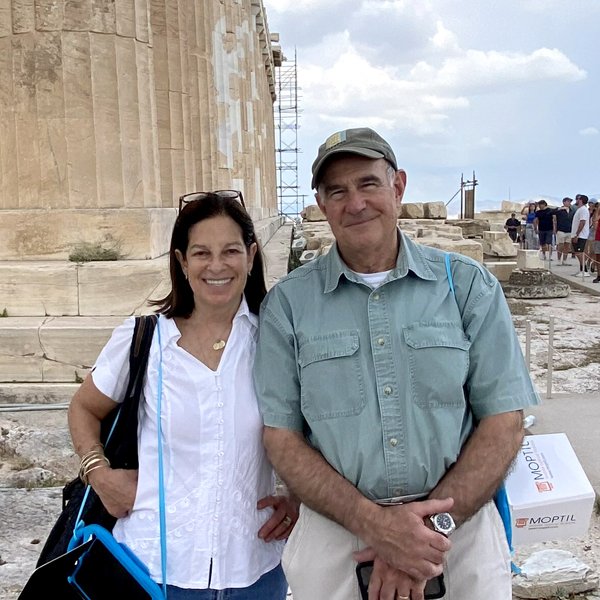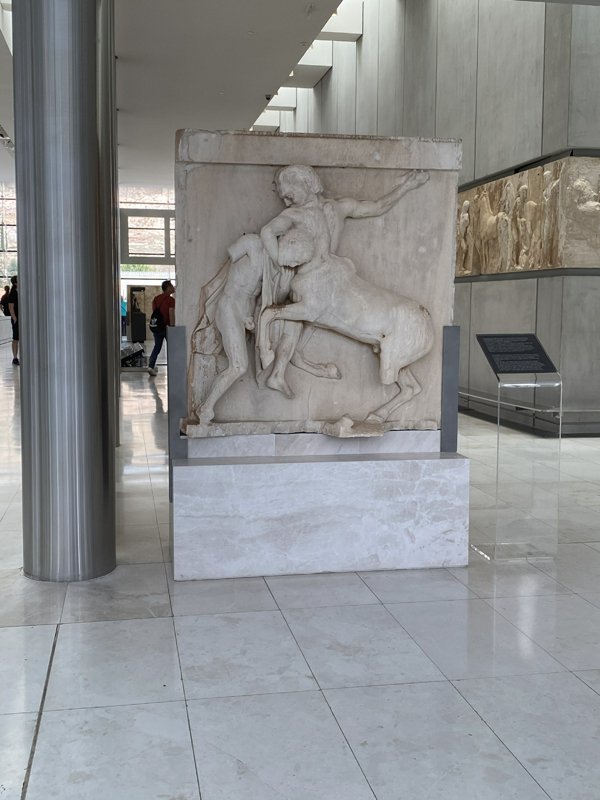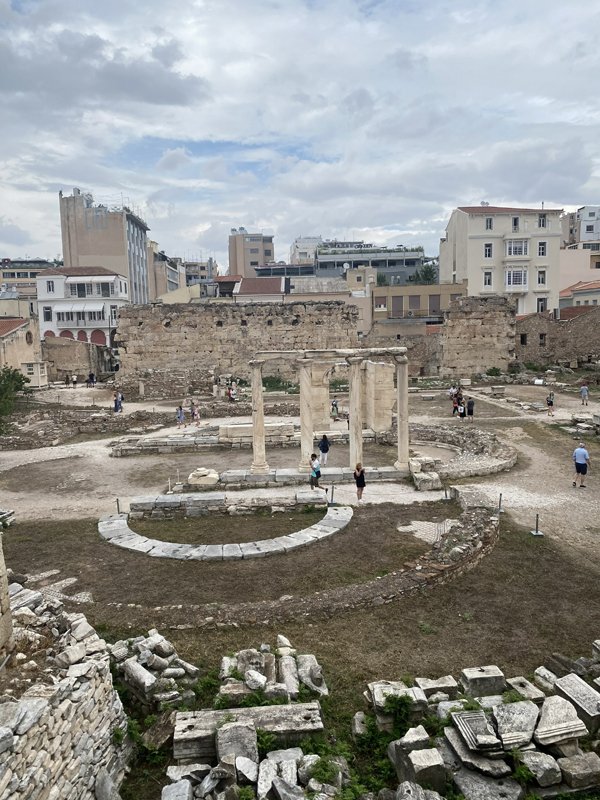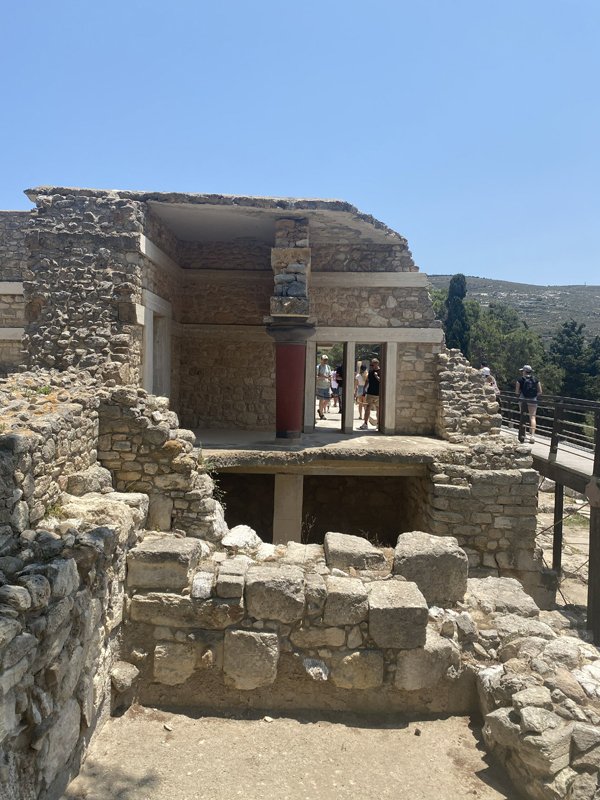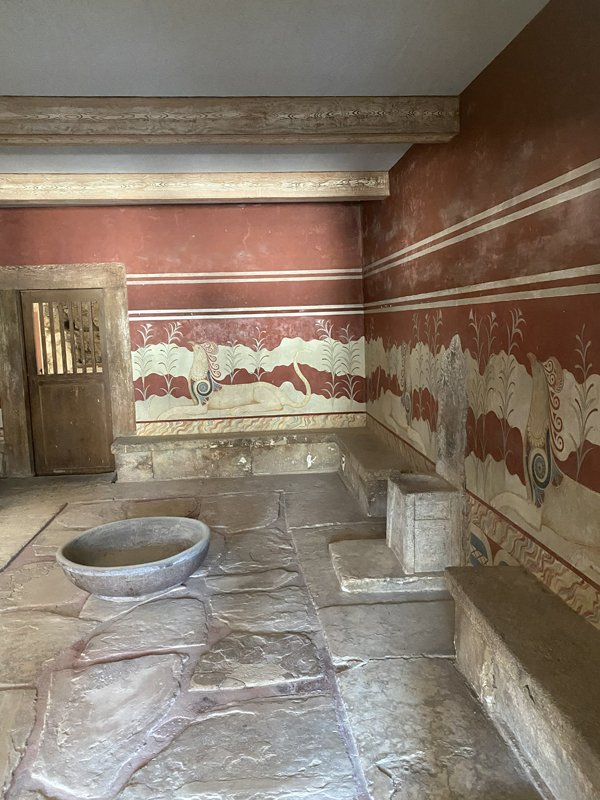What I Learned on My Summer Vacation
by Judy Newman
I just returned from a long-anticipated, wonderful summer vacation to Greece where we visited Athens and Crete.
I am going to skip over the bookends of our trip: the unanticipated, not so wonderful United Airlines stop in Dublin on the way over (unruly passenger who needed to be escorted off the plane by the Irish police), and my truly unanticipated bout with severe vertigo the last night of our trip, which landed me overnight in the Agios Nikolaos General Hospital where I met the kindest and most professional doctors and nurses. My hospital stay was followed by a few flight cancellations (and yes, a big change fee from United Airlines) which delayed my return home by three days.
During these unscheduled detours, I learned a lot about medical treatments for vertigo, but a little less about the root cause of all these flight delays this summer. However, my summer vacation lessons are not particularly germane to the larger point I am trying to make in this column. If you want to hear about my vertigo or airline frustrations—or share your own stories—please reach out. I’ll be happy to chat.
But what is relevant to this column and what I have known throughout my career in children’s book publishing—but really learned first-hand on my summer vacation this year—is why so many kids are fascinated by Greek Mythology. And why ancient legends and myths turn so many kids on to reading.
Once we finally made it to Athens, we spent our first day walking through the Acropolis itself, and then touring the beautiful Acropolis Museum. It is thrilling to walk among the ruins and hear the mythological origin story of this beautiful city: the competition between the gods, Poseidon and his niece, Athena, to see who could give the best gift to the people. Poseidon delivered the sea and Athena offered an olive tree. The rest is history.
It’s hard for me to keep track of all the gods and goddesses (I have a new summer reading list filled with Greek gods and heroes). But one of my memorable favorites is Aesculapius, the god who specialized in healing, and understood the importance of holistic health. We saw evidence of the community of practitioners dedicated to physical and mental health.
As we made our way through the Acropolis we met Zeus, Artemis, Poseidon, Dionysos, Aphrodite, and of course Athena, for whom the city is named (yes, she won the original competition, but with a few caveats). We learned about battles and love interests and jealously and alliances; we saw the magnificent amphitheater built by Herodes Atticus in memory of his wife, Regilla (our guide insinuated Herodes might have killed Regilla?); the Temple of Athena Nike; and so, so much more.
I also developed a huge appreciation for the excavation process, the field of archaeology and archaeologists, and how they piece together history and tell the story from uncovered ruins.
After a few days steeped in ancient Athens, we made our way to Knossos on the island of Crete and toured the site of this sophisticated flagship palace of ancient Minoan Civilization ruled by King Minos. Archaeologists believe Knossos was founded in 7000 BC and excavated by archaeologists nearly 9000 years later in 1900. I gained a tremendous appreciation for unearthing and literally reconstructing a city through evidence and interpretation and analysis. Visitors to Knossos can now see with their own modern-day eyes, a sophisticated, highly efficient plumbing, and strategic defense infrastructure built and inhabited thousands of years ago. During our time in Knossos, the origin story of the Minotaur—a monster with a bull’s head and a human body—came to life. It’s one of my favorite myths but you’ll have to look up the details yourself.
We explored Gournia, an early Bronze Age, Minoan satellite palace complex not far from Knossos also on the island of Crete. Harriet Boyd-Hawes (1871-1945) a pioneer and archaeologist—and a fellow Libra from my hometown of Boston—graduated from Smith College and raised enough money—and courage—to visit and then excavate this ancient Minoan site in 1900. She was particularly interested in connecting her findings to the daily lives of the ancient people she studied. Harriet was the first woman to speak before the Archaeological Institute of America; she was fierce and compassionate. Her life story is fascinating. She’s one of those people I wish I had known in person.
The rich, textured, thrilling myths and legends set amid these ancient ruins I visited on my summer vacation rival any modern-day adventure story.
Rick Riordan, the global bestselling author—famously a “reluctant reader” until he discovered mythology and fantasy in junior high—has inspired millions of kids to see themselves as readers with his Percy Jackson and the Olympians series and his rich bibliography of titles including many based on Greek, Roman, and Norse myths.
Throughout my long (but not ancient) career in children’s book publishing, D’Aulaire’s Book of Greek Myths by Ingri and Edgar D’Aulaire is always a favorite choice for kids through the Scholastic Book Clubs.
It’s July, and we’re heading into the dog days of summer—(based on another myth and named for Sirius, the brightest star in the constellation Canis Major). I urge you to use some of these (hopefully) slower days this summer to explore Greek mythology for yourself and the kids in your life. The stories rival contemporary action plots; the characters are fierce and passionate and complex and interesting; and the entire oeuvre provides a wonderful entry point both for kids who don’t love reading and for eager readers—to devour excellent stories and lean into their identities as readers.
And based on what I learned on my summer vacation, grown-ups will be pretty inspired too.
Happy Reading!
XX,
Judy
Judy Newman is President and Reader-in-Chief of Scholastic Book Clubs. For more information, visit judynewmanatscholastic.com.


